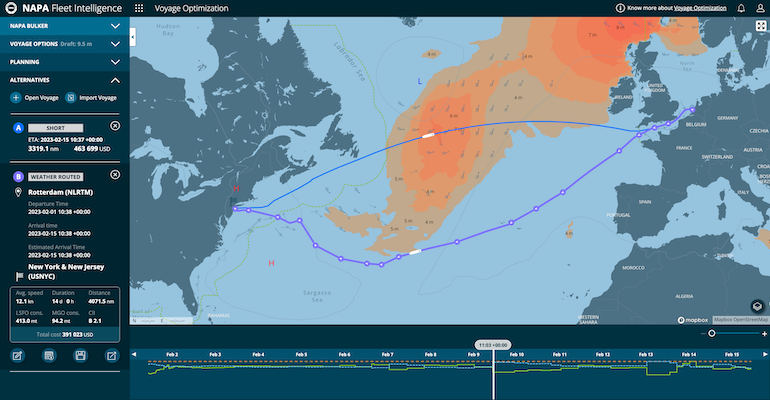The results demonstrate that voyage optimisation software has significant scope to improve the initial carbon intensity indicator (CII) ratings of vessels, which have been monitored since 1 January. But the digital systems also offer the potential to raise the future ratings of vessels for up to three years as the CII framework tightens over the second half of the decade.
The findings come against growing concern amongst both shipowners and charterers that the CII has serious shortcomings in various sectors and fails to compensate for the operational profile of certain ship types.
In a joint study conducted on Marubeni bulk carriers operating on a range of trades, it was found that NAPA’s Voyage Optimization software could reduce fuel consumption and CO2 emissions by up to 7.3% and improve a ship’s CII rating by an average of 5-6%. This, the researchers said, would enable ships to maintain their CII ratings for a further two-to-three years.
The IMO’s carbon intensity framework uses five categories from A to E, to rate ships’ performance. The study found that a 5-6% efficiency boost could well mean a ship moving up one category – from D (unacceptable) to C, for example, or from B to A. This could have important implications for vessel deployment and earnings as charterers focus more closely on ships’ emissions performance in the future.

Time extension is a key point. Owners of ships in categories D and E must take action to improve carbon intensity performance within either three years, D, or immediately, E. Up to three more years in a higher category could delay the requirement to invest in new emissions-cutting technologies or, for older vessels, make such investments completely unnecessary.
The results are also important because they demonstrate steps that ship operators can take today. Most future fuels are still under development and lack the global infrastructure necessary to meet the needs of many shipowners. Wind sails of various types, air lubrication, and hull appendages are amongst the other steps that ship operators may consider, but experts say that optimising voyages is a far simpler and faster option.
Copyright © 2024. All rights reserved. Seatrade, a trading name of Informa Markets (UK) Limited.
Add Seatrade Maritime News to your Google News feed.  |

